Every so often the staff of the Office of History (CEHO) rediscovers something in its Research Collection that strikes a chord. One of those items is a carefully assembled photo album from the Norfolk District depicting district activities in the very early 1930s. The photographs are carefully mounted on off-white album pages and surrounded with a hand-drawn border. Meticulously scripted hand-written captions and dates embellish the pages.
In 2020 CEHO contracted with SEARCH Inc. (Southeastern Archaeological Research) to digitize the album and to attach captions and other data to the image files. CEHO then finalized the files and provided them to the HECSA Library for posting on the USACE Digital Library where reviewers can browse, search, and download the public domain photographs.
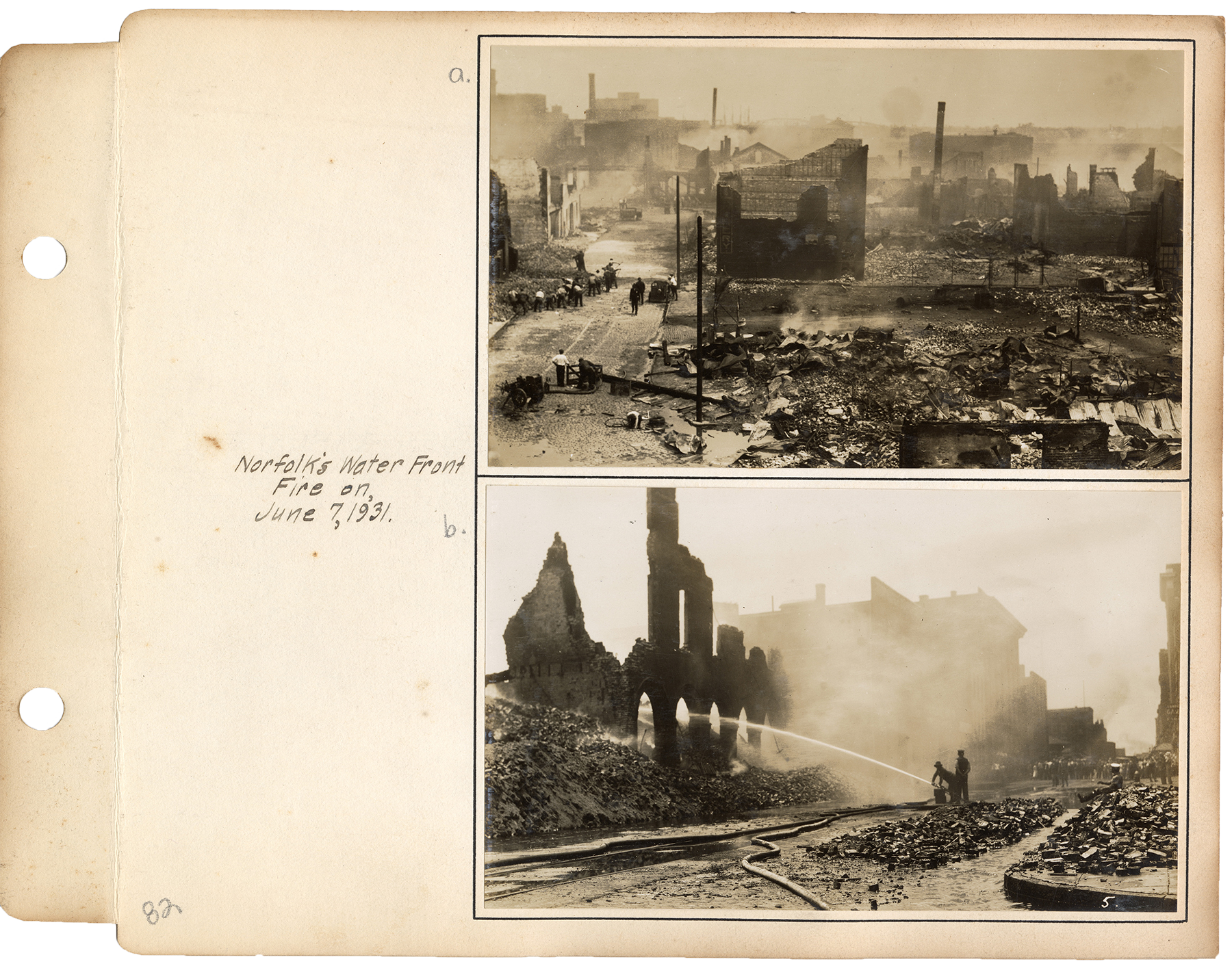 |
|
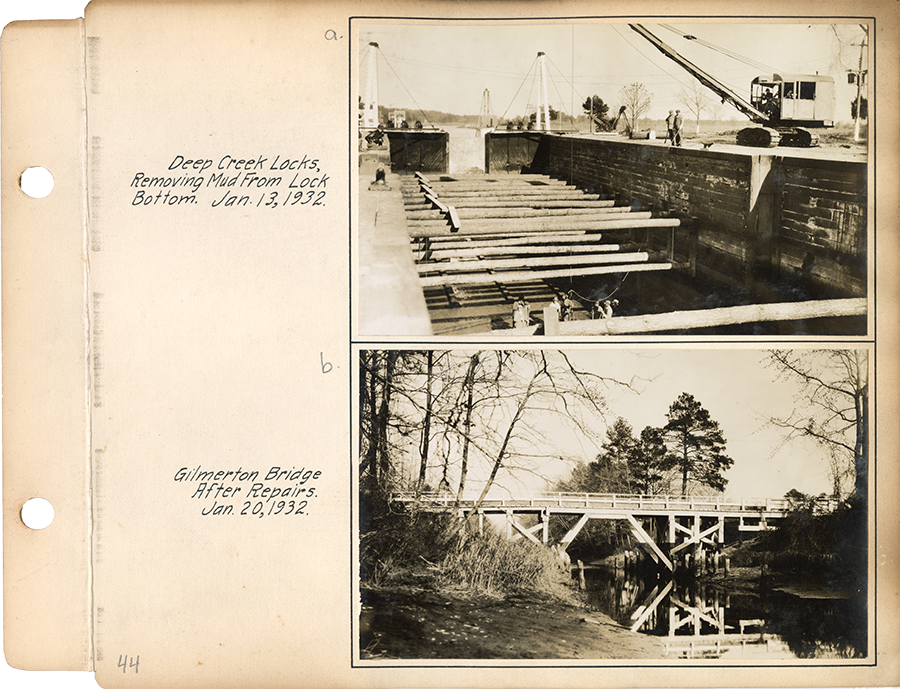 |
Two pages from the album with photographs showing the aftermath of the fire on Norfolk's waterfront on June 7, 1931 (left);
repairs to the Deep Creek Lock in 1932 (upper right); and a view of the Gilmerton Bridge, Chesapeake, in 1932 (lower right). |
The album provides a snapshot of a brief three-year period in the history of Norfolk District. It illustrates the work the district undertook, as well as the equipment, the tools, and the methods used to do it. It also provides a glimpse of people involved with the district’s civil works—employees, hired hands, and contractors. Finally, the photos frequently reveal the landscape of the time, both the natural environment of land and water but also the built environment, including locks, dams, and weirs; bridges, piers, and docks; and offices, houses, and other facilities.
Of the twenty or so large civil works projects listed in the Norfolk District section of the Annual Report of the Chief of Engineers for fiscal year 1932, most are represented here pictorially. Listed first in the report and foremost in the district’s workload is Norfolk Harbor itself. Maintaining a navigable harbor through dredging and deepening of several channels and inlets in the area occupies many pages in the report and a multiplicity of the photos in the album. The album also features river work, such as dredging and straightening, from the large James River in Virginia to the smaller Scuppernong and Knobbs Creek in North Carolina.
Another prominent district undertaking referred to in the report and in the album is the construction, maintenance, and repair of the portion of the Atlantic Intracoastal Waterway between Norfolk, Virginia, and Beaufort Inlet, North Carolina. A critical project for commercial navigation, the waterway encompasses the Albemarle & Chesapeake Canal and several other land cuts, as well as Deep Creek, Lake Drummond, and the Dismal Swamp Canal and its locks. Images include views of some of the government-owned bridges that cross these and other waterways.
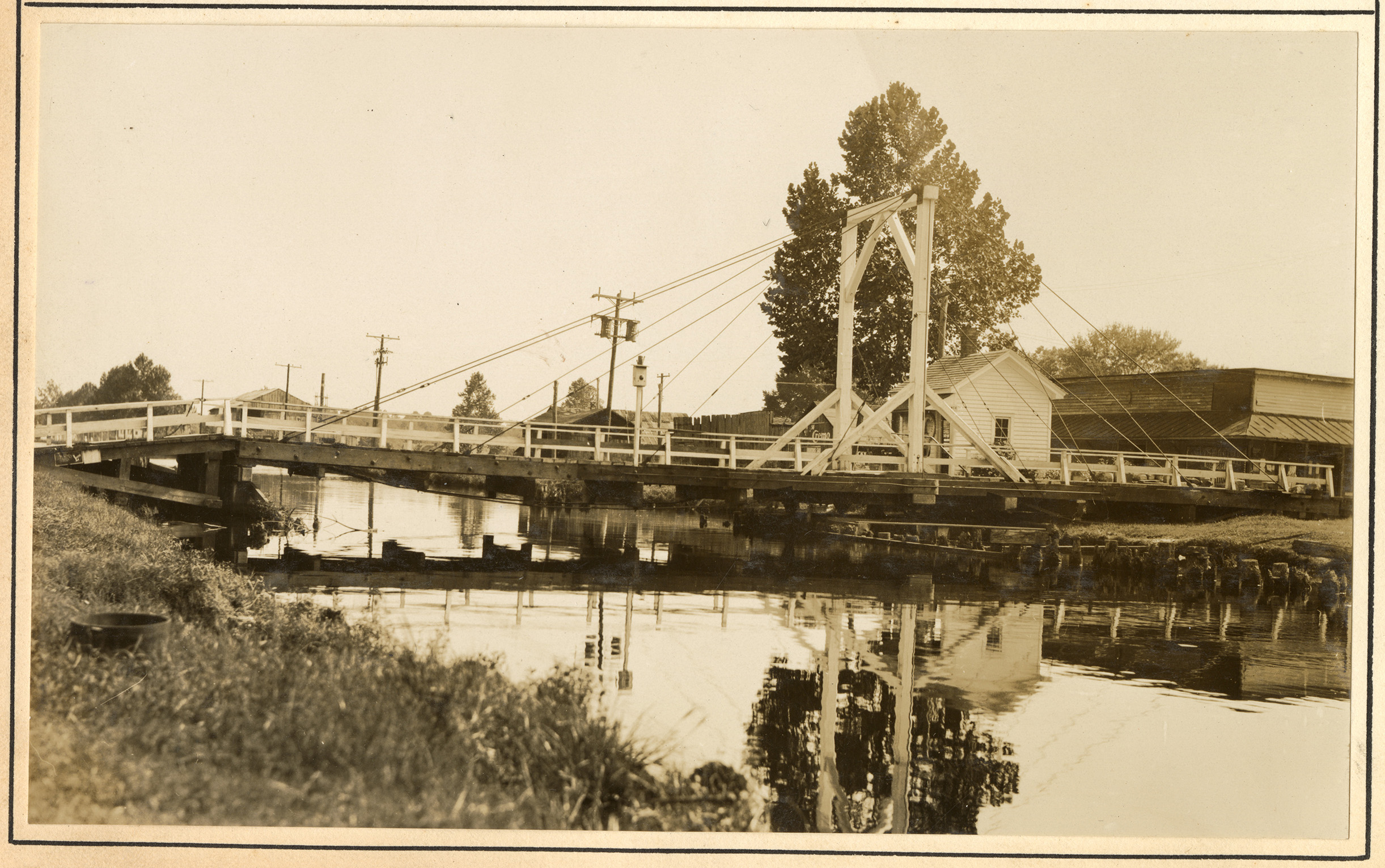 |
|
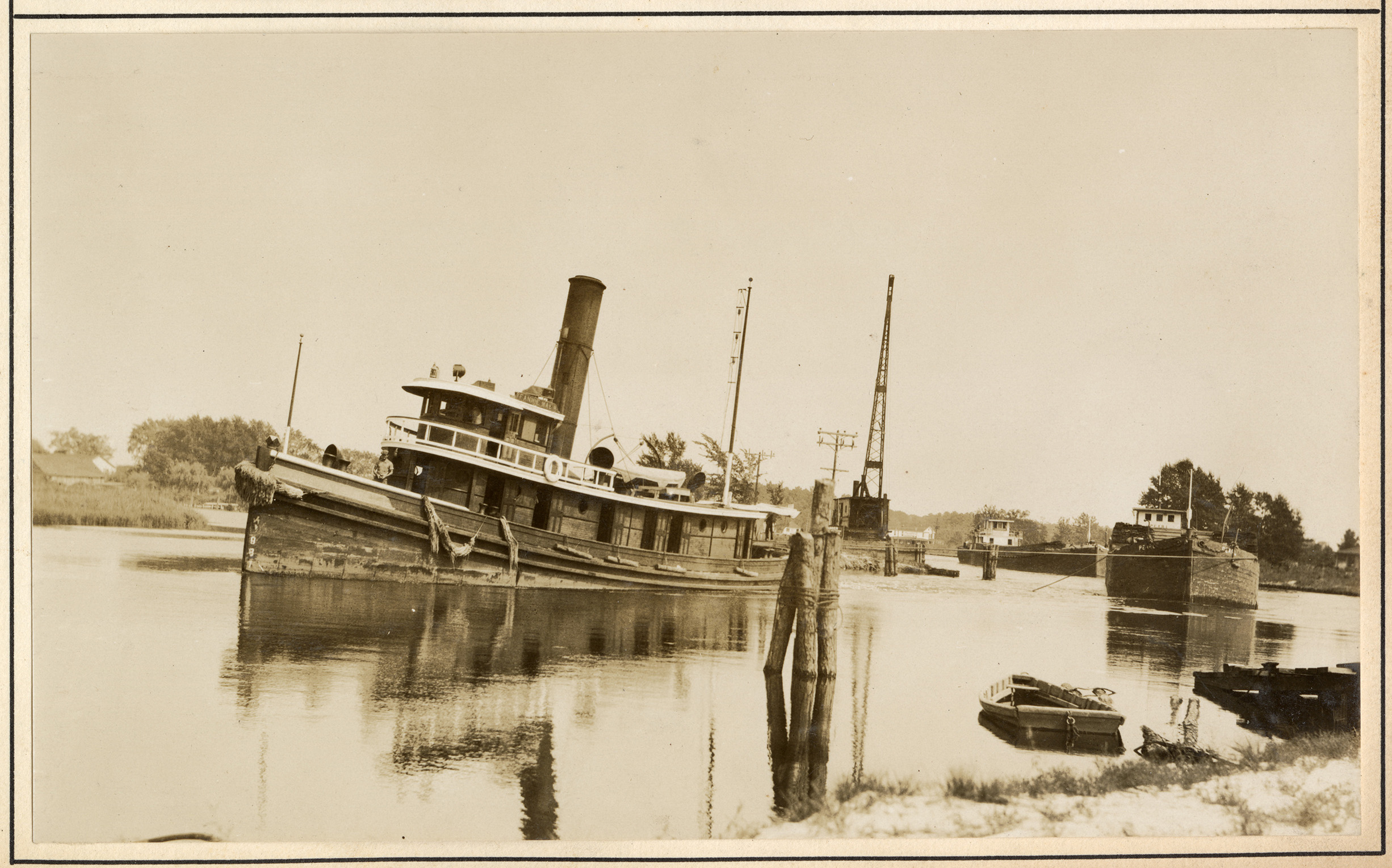 |
| The South Mills Bridge across the Dismal Swamp Canal in North Carolina, Aug. 25, 1931. The Corps replaced this bridge in 1934. |
|
The Fannie Mae and some barges towing through the
Albemarle and Chesapeake Canal, Aug. 14, 1931. |
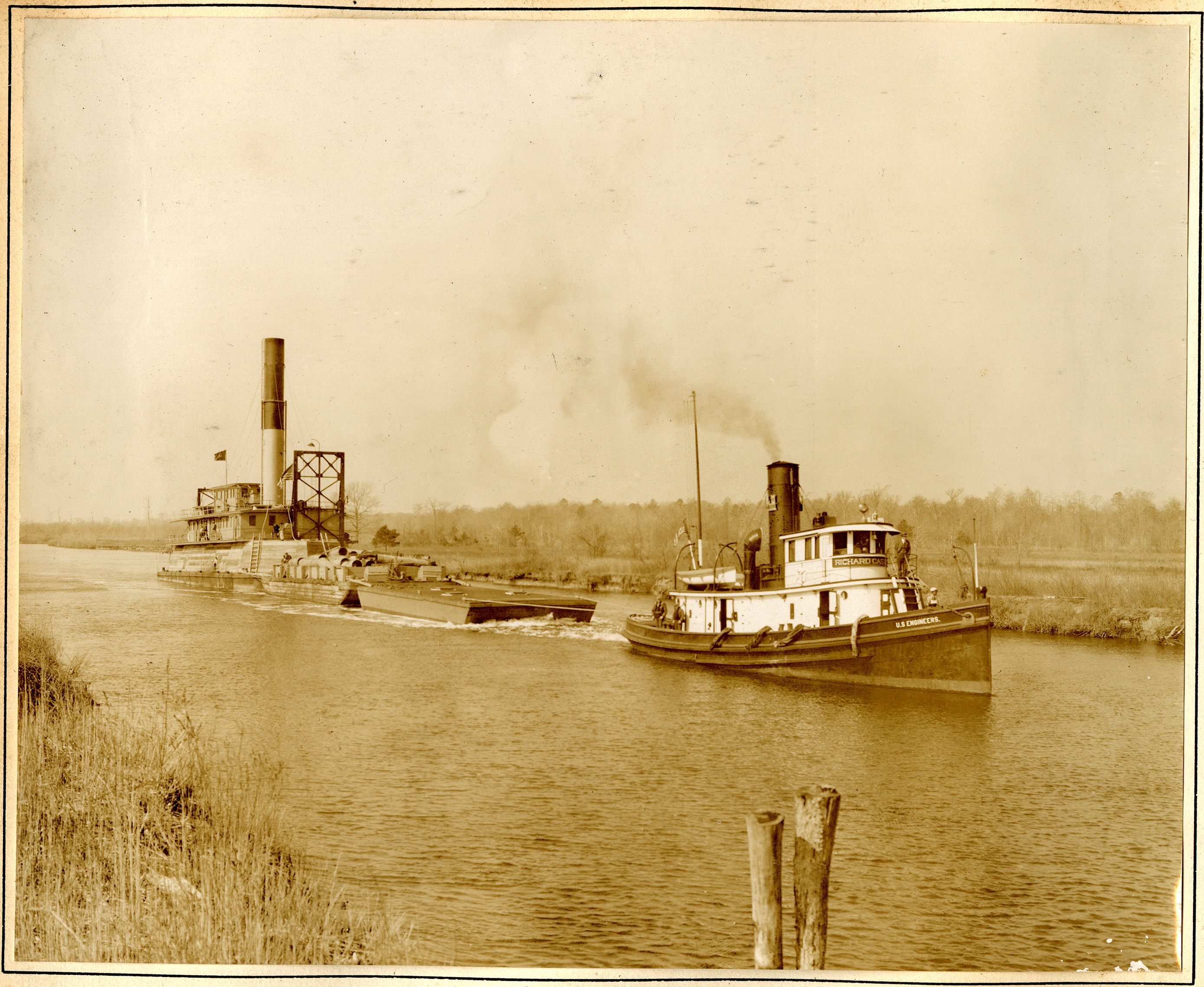 |
|
 |
| US tug Caswell towing the US dredge Currituck through County Bridge in the Albemarle and Chesapeake Canal, Feb. 22, 1931. |
|
A view of Deep Creek Locks in Chesapeake, Virginia,
showing double shoring, Jan. 13, 1932. |
The photo album does not ignore smaller projects, however. It includes the simple feeder ditch between Lake Drummond and the Dismal Swamp Canal, and an occasional locktender house pops up. Sometimes one is treated to views of how the work was actually accomplished and with what equipment. One can see levee machines and dynamite charges, pipelines and timber braces, cofferdams and orange peel buckets on derrick boats.
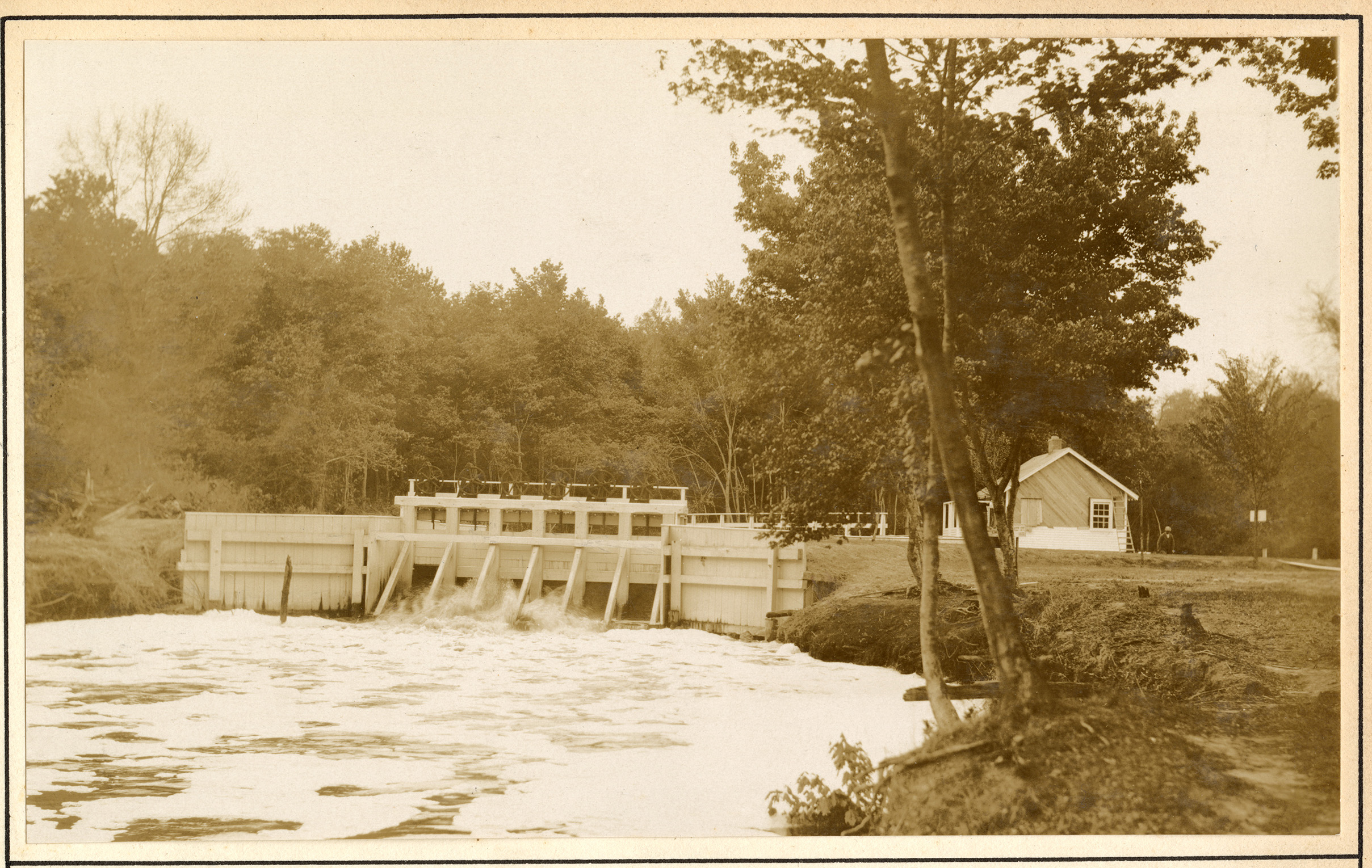 |
|
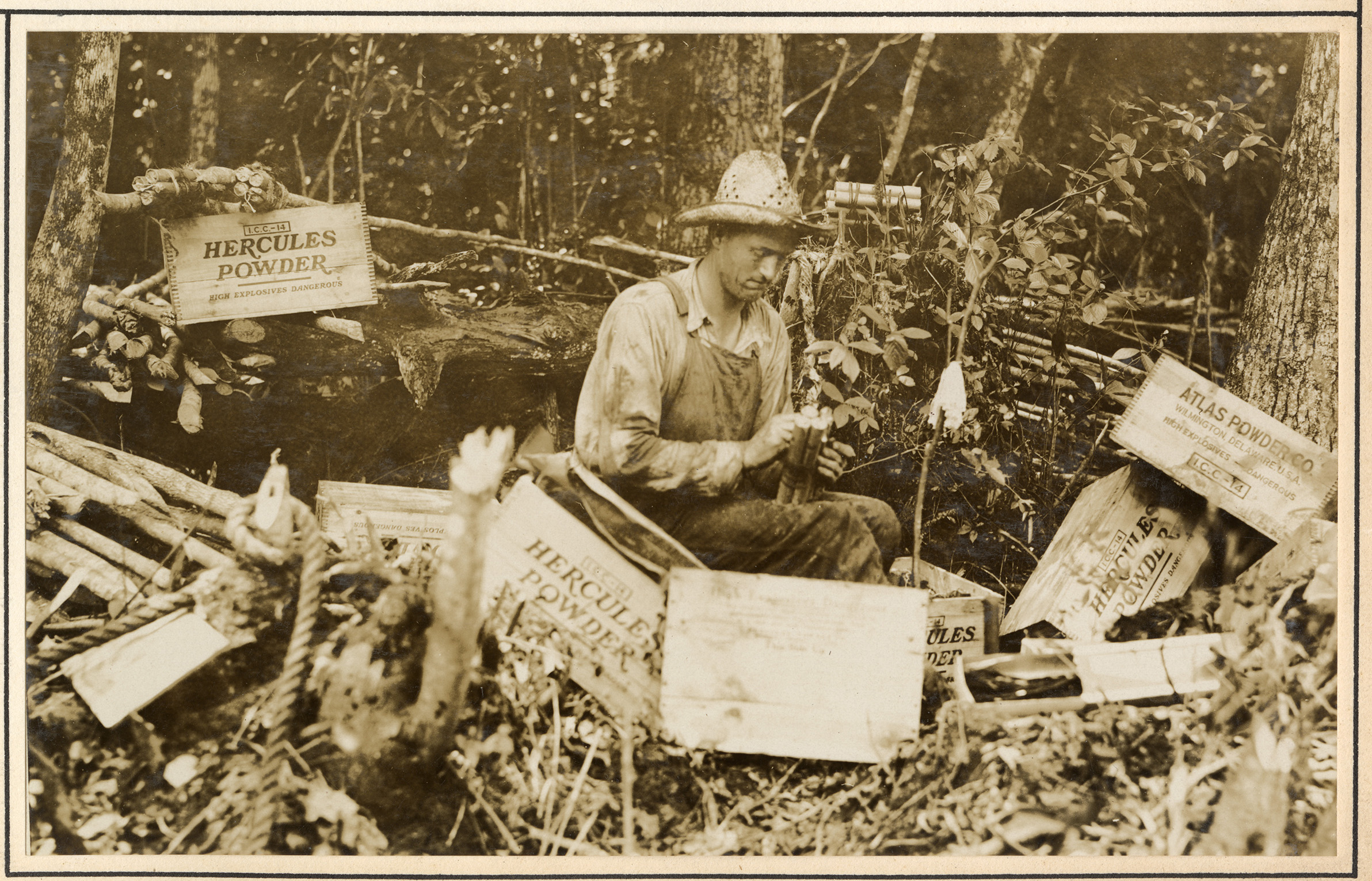 |
| The spillway at Lake Drummond, May 18, 1931. |
|
Preparing dynamite for blasting in the Scuppernong River
by US Derrick No. 14, May 13, 1931. |
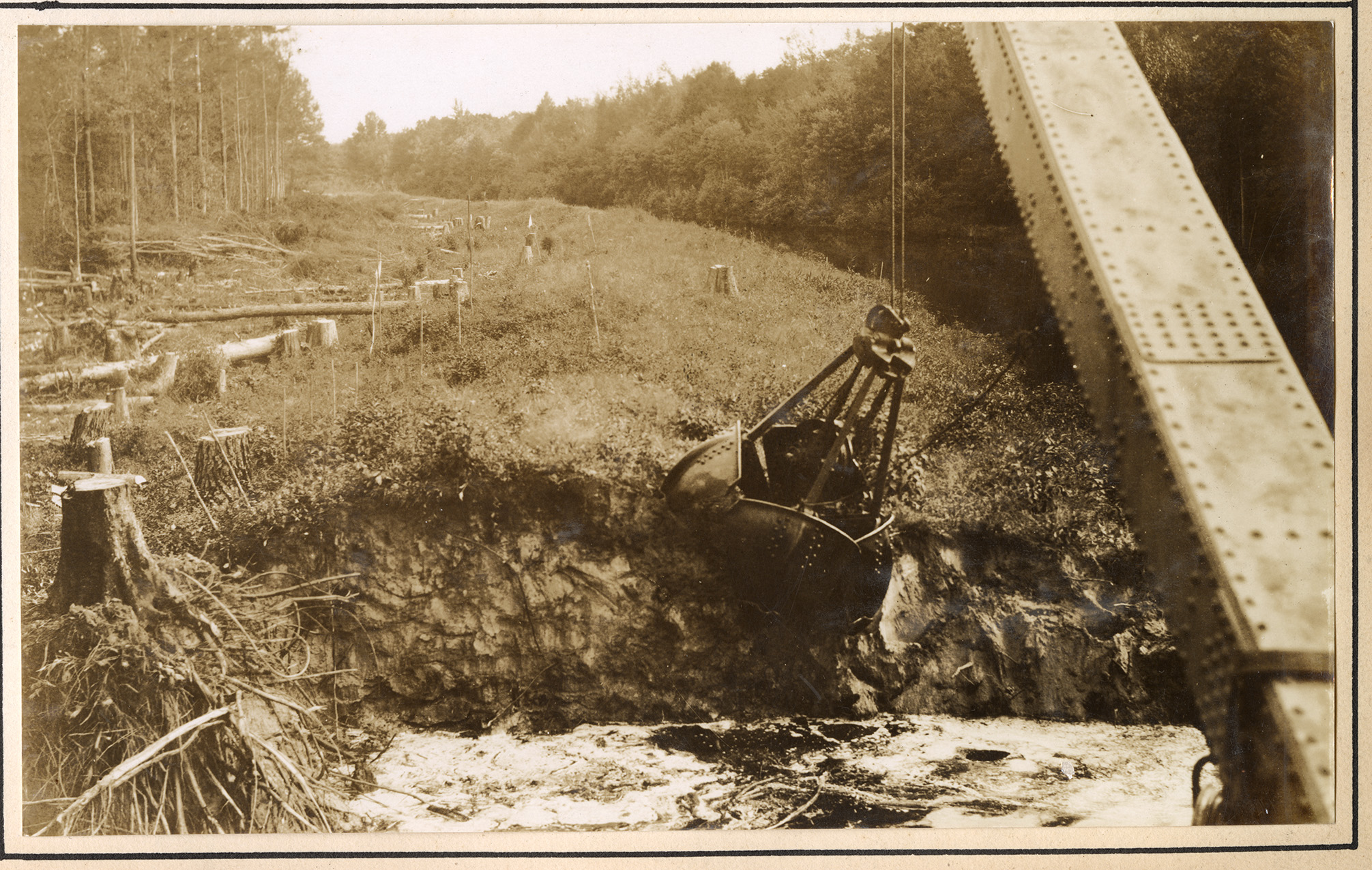 |
|
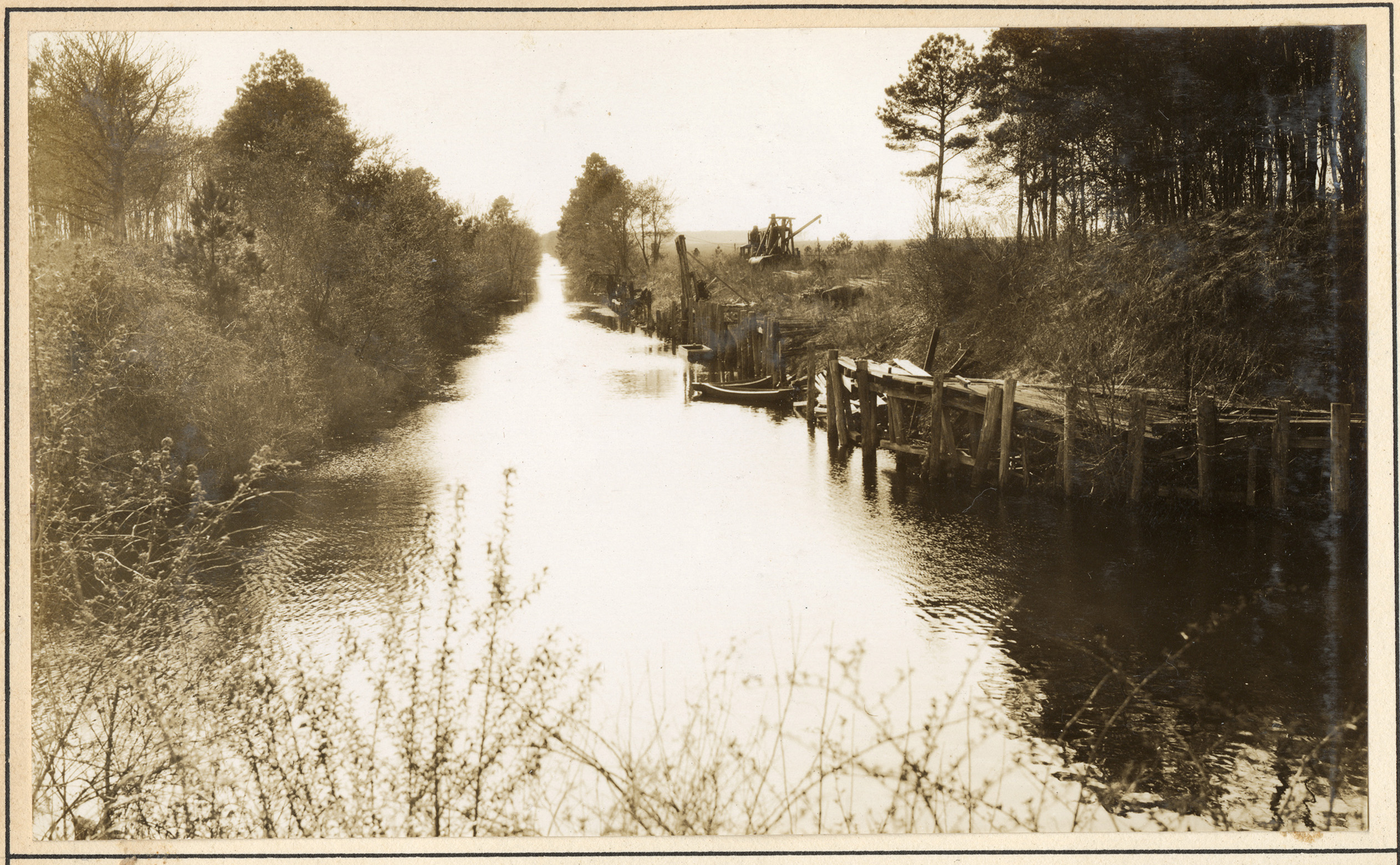 |
US Derrick No. 14 dredging Turners Cut in North Carolina,
Dec. 20, 1930. |
|
The feeder ditch between Lake Drummond and the
Dismal Swamp Canal, Apr. 14, 1931. |
For boat enthusiasts, the photo album includes a large selection of images that depict all manner of floating plant belonging to the U.S. Engineer Department (dredges, launches, tenders, derrick boats). Many photos show the floating plant in action and often with crew visible. There are also images of privately owned vessels that contractors used to perform various civil works projects for the district. In addition, the album includes photos of private, military, and foreign vessels that visited the nearby ports and waterways, including the Viking ship Roald Amundsen, a Swedish naval training sailing vessel that now serves as a floating hostel in Stockholm, and the renowned navy battleship USS Arizona, the most famous ship destroyed in the attack on Pearl Harbor a decade later. Several shipwrecks also make an appearance.
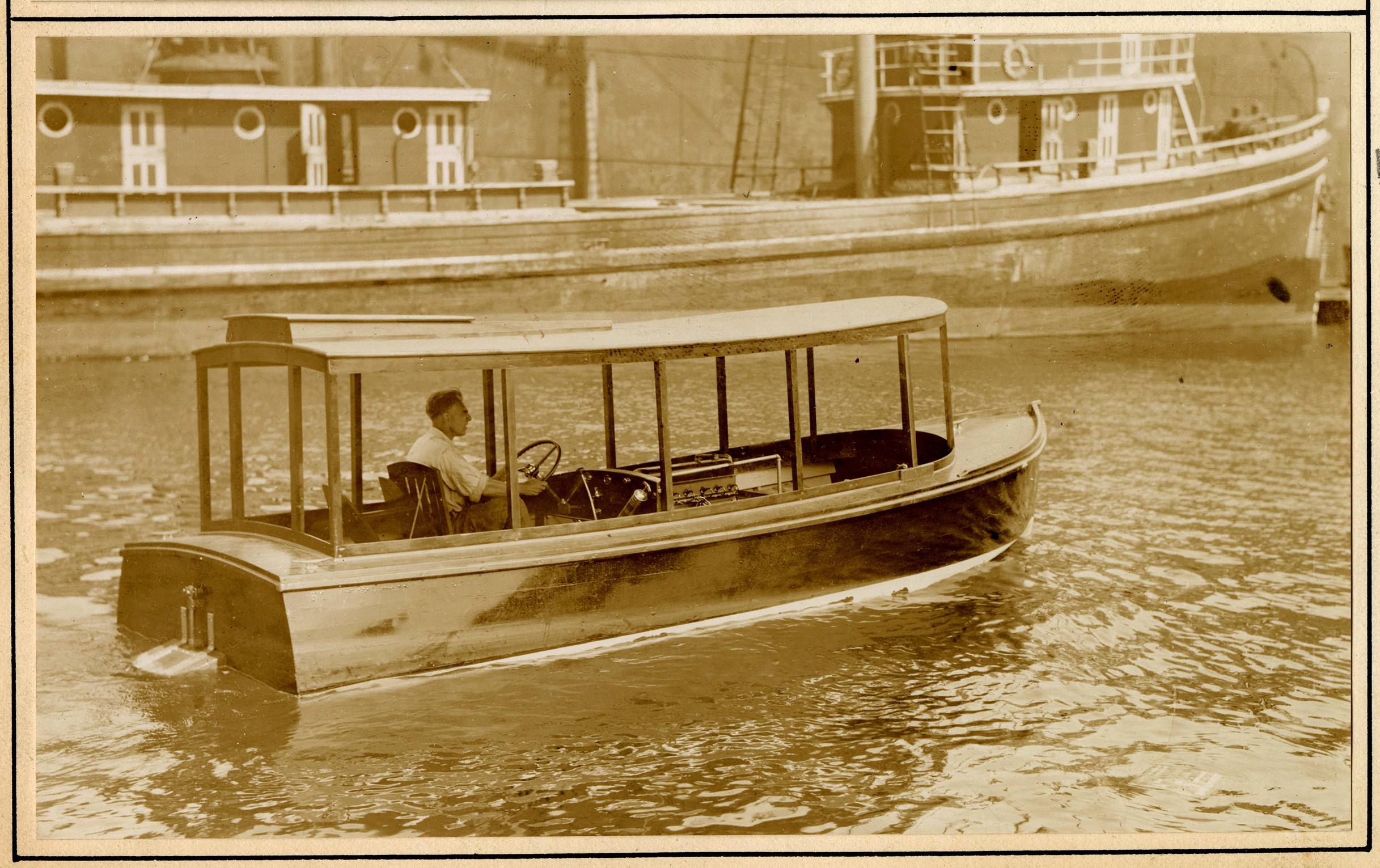 |
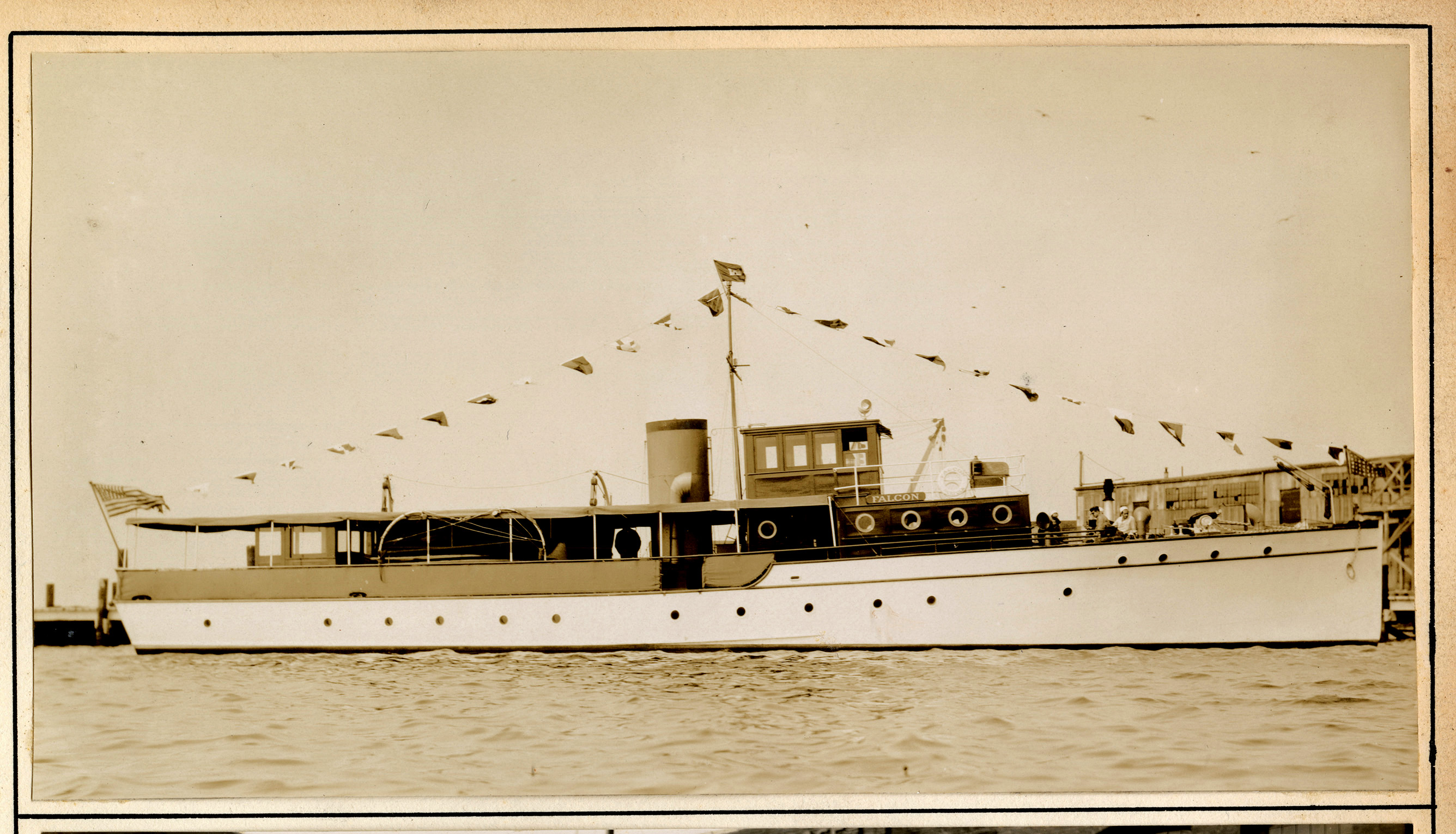 |
 |
| A launch used in the Dismal Swamp Canal feeder ditch, Aug. 14, 1931. |
The US launch Falcon, Feb. 2, 1932. |
US dredge Comstock at the Colonna Marine Railway Corporation in Norfolk,
May 10, 1931. |
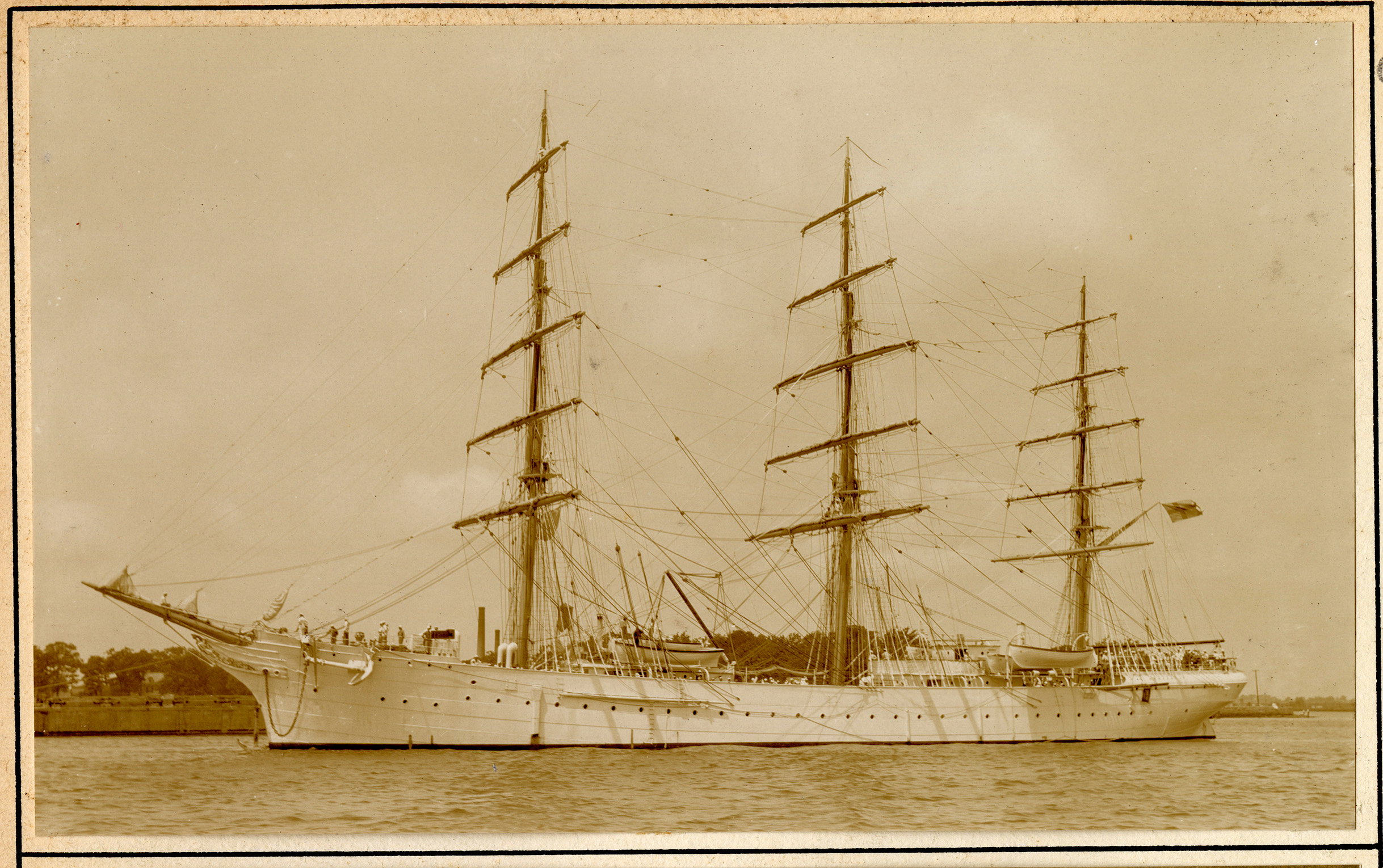 |
|
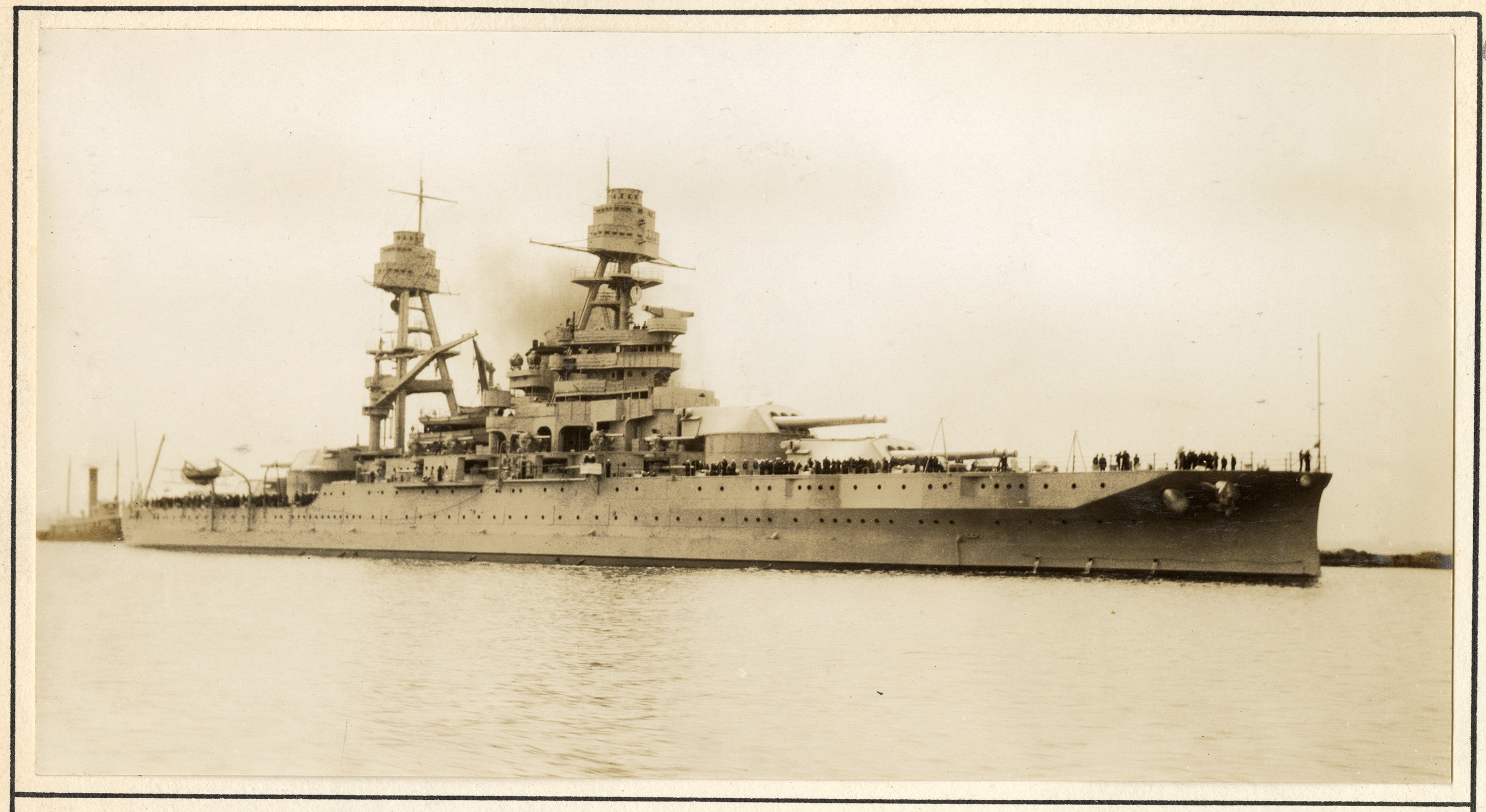 |
The Swedish naval training ship af Chapman in Norfolk,
May 20, 1931. Today the ship serves as a hostel. |
|
The navy battleship USS Arizona, Apr. 18, 1931. |
Of the people depicted in these photos, most are not identified by name. However, one photo shows the district engineer at the time, Maj. G. R. Young, on the occasion of a visit from the Chief of Engineers, Maj. Gen. Lytle Brown. Both men are in civilian clothes on a dock preparing to board one of the district’s launch boats on April 15, 1931, the first day of the annual convention of the American Society of Civil Engineers. The Suffolk News-Herald of March 26, 1931, reports that Brown was to deliver a talk that day on “Flood Control and Navigation of the Lower Mississippi” at the Monticello Hotel in Norfolk. Perhaps the photo depicts the men departing for the hotel, just over a mile away from the engineer reservation on the Elizabeth River.
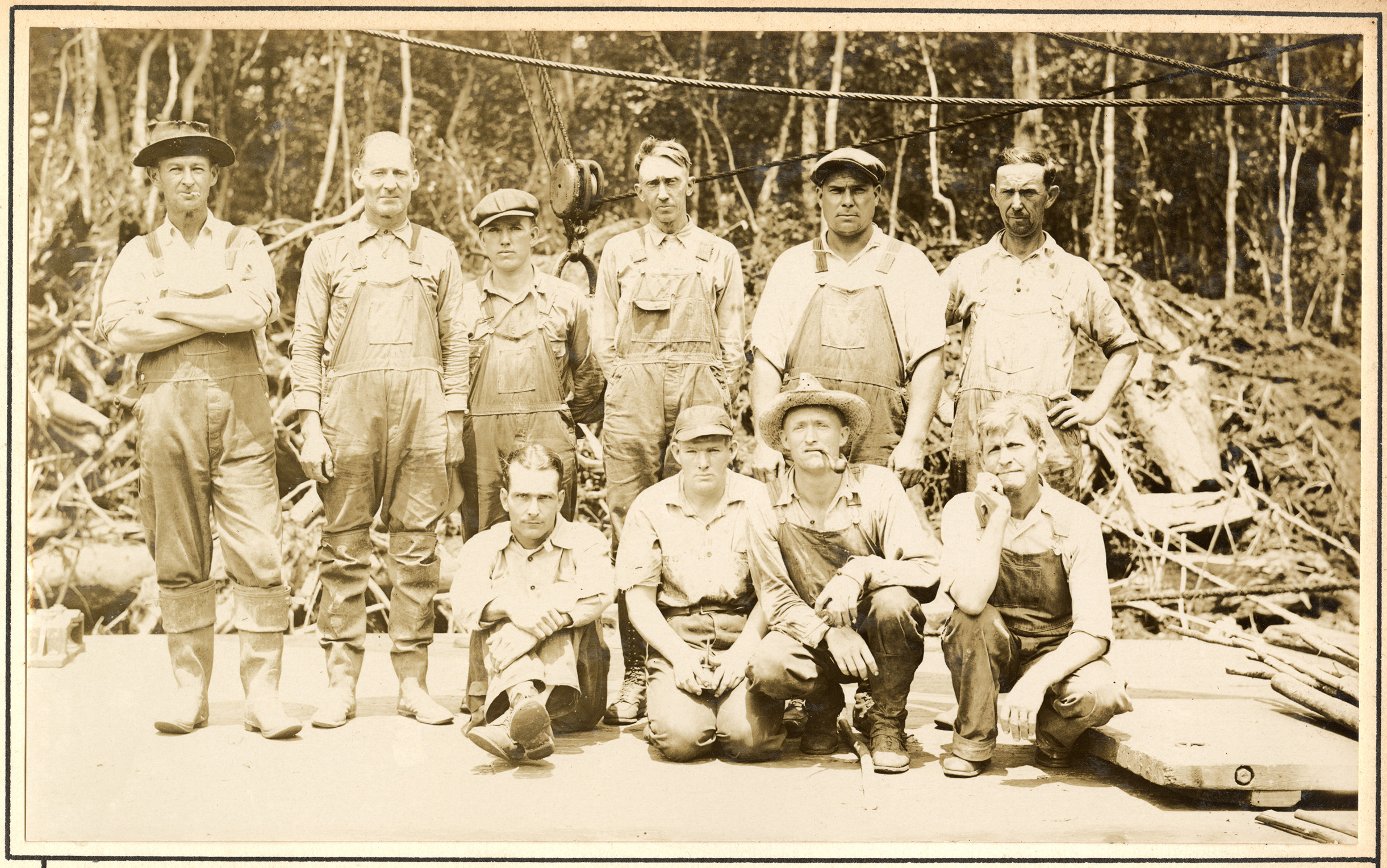 |
|
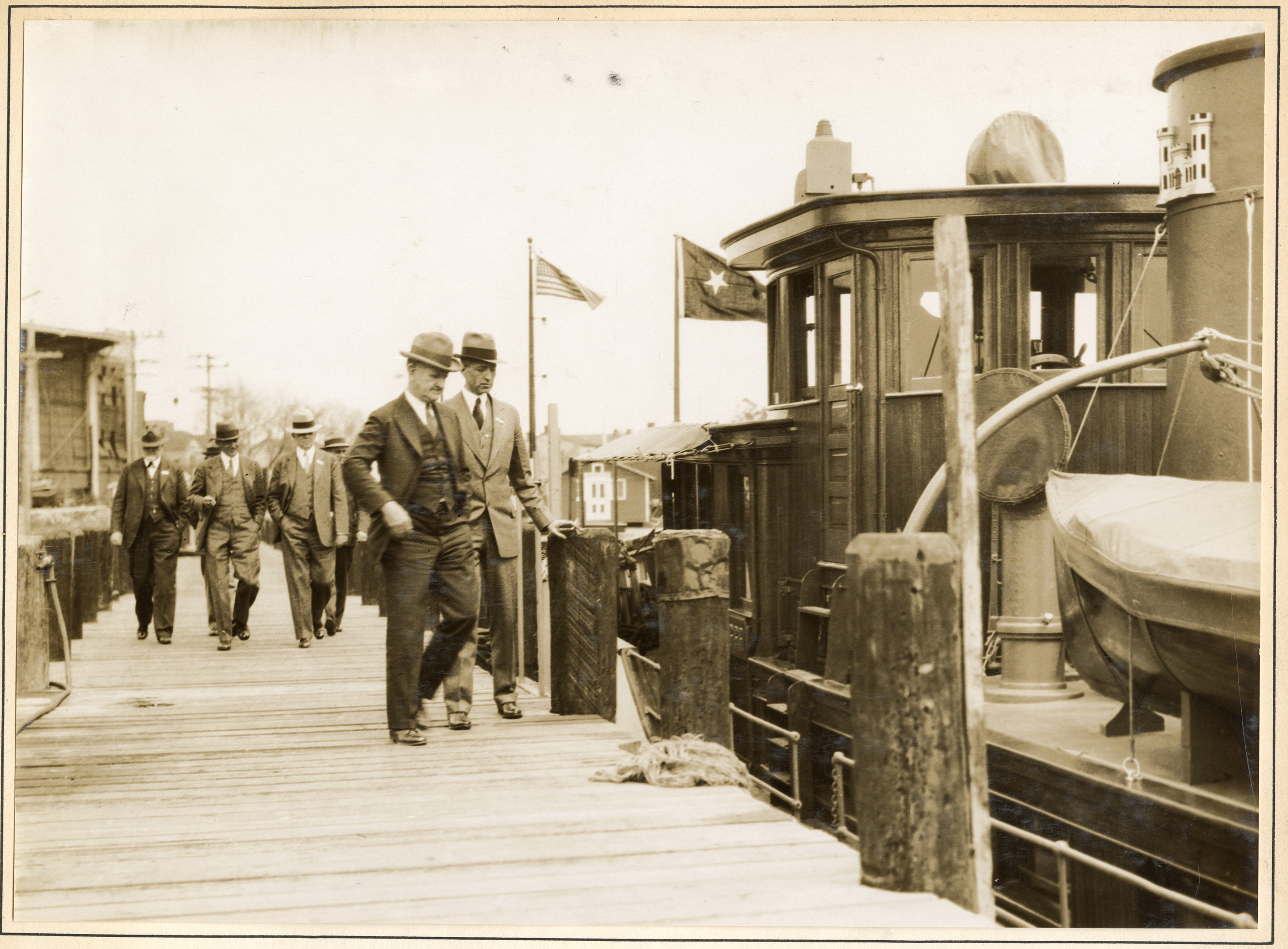 |
| Crew of the US Derrick No. 14, May 13, 1931. |
|
Gen. Brown and Maj. Young boarding the US launch Paquippe,
Apr. 15, 1931. |
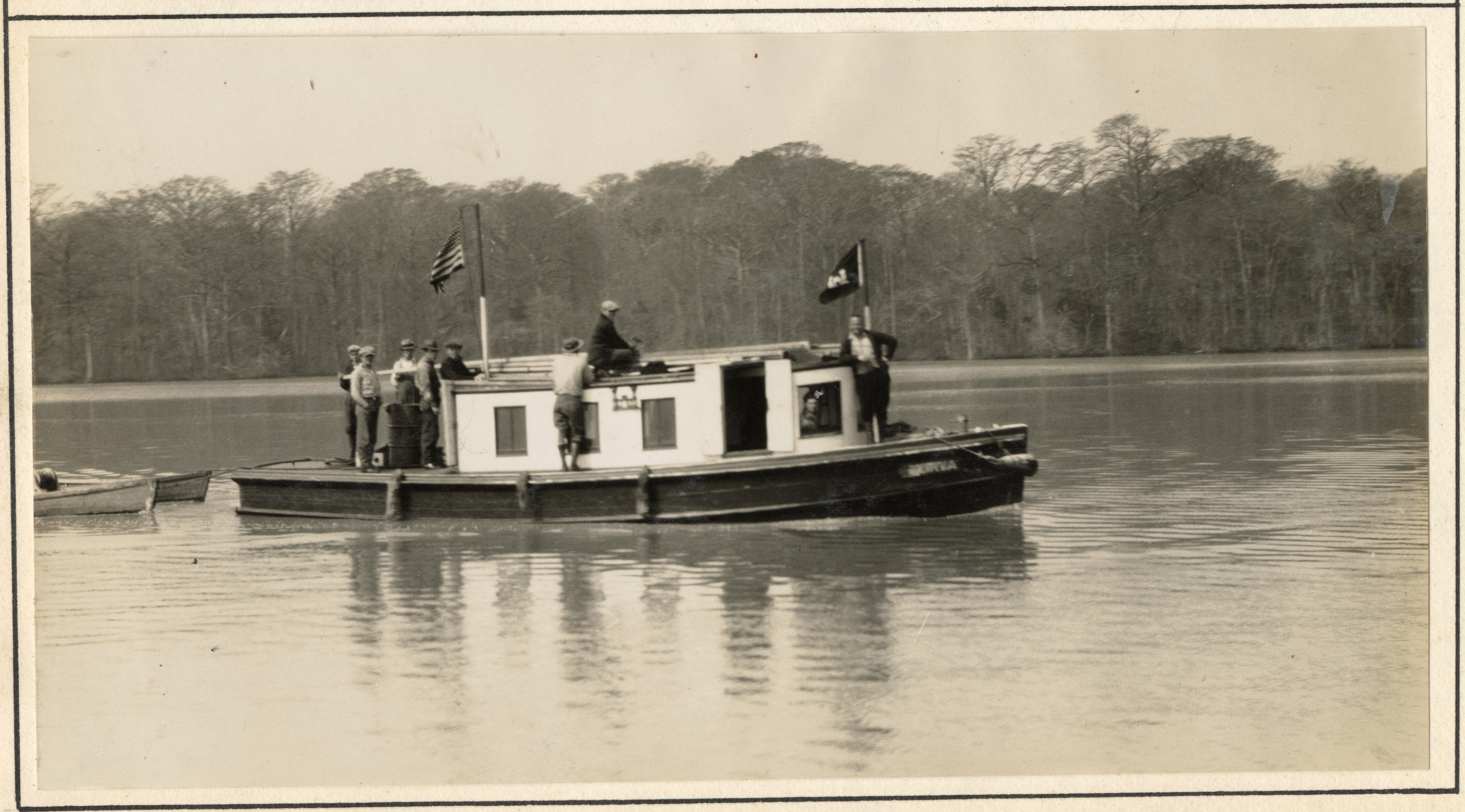 |
|
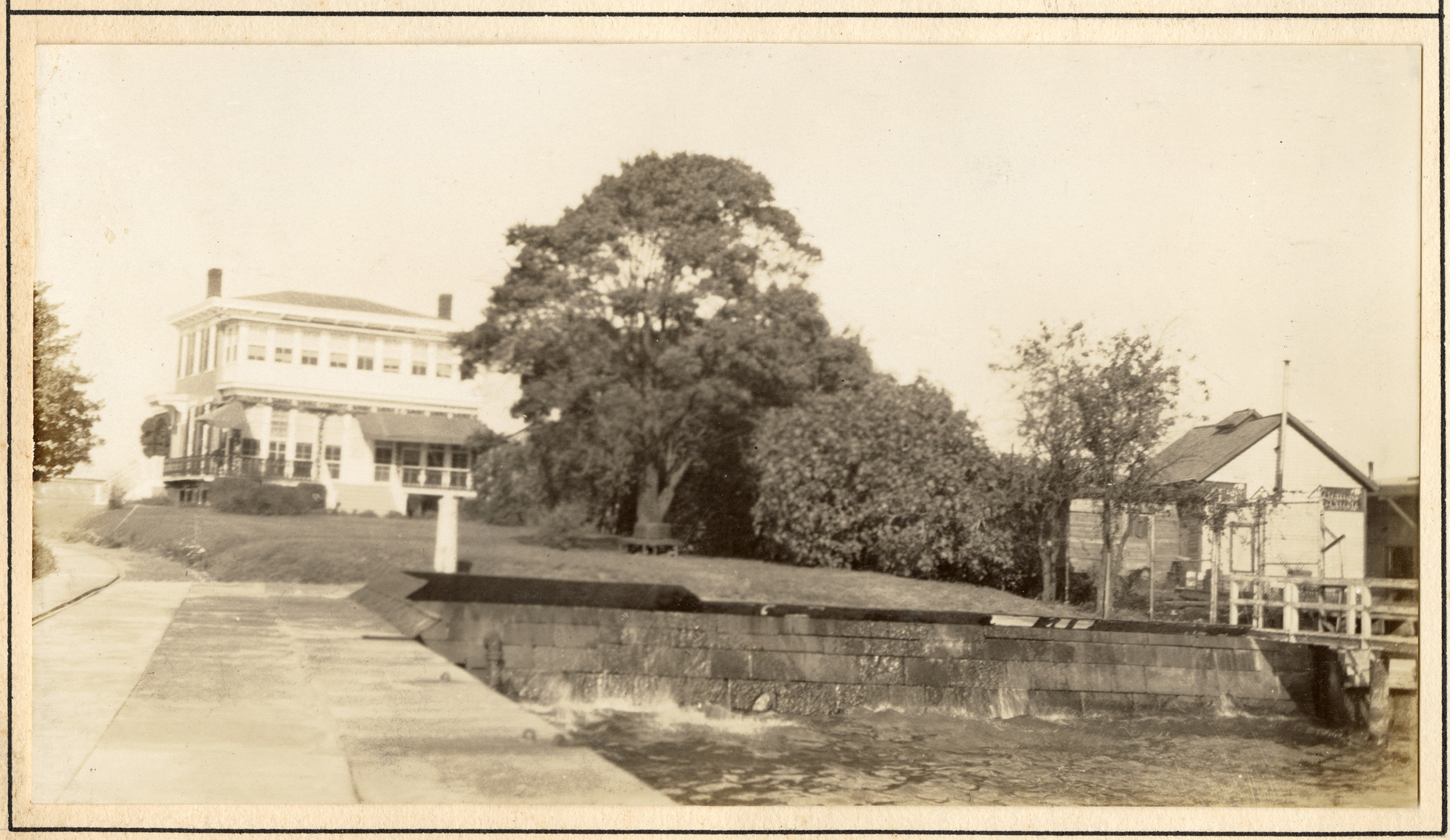 |
| US launch Norva and crewmembers on deck, Apr. 9, 1931. |
|
The district’s main office at the engineer reservation
at Fort Norfolk, Sep. 10, 1931. |
Today, amongst its many responsibilities, the Norfolk District of the Corps of Engineers continues to pursue its waterways development and navigation mission in areas that still include Norfolk Harbor, the Intracoastal Waterway, and Virginia’s rivers. Thanks to a photographer and the compiler of this photo album, we have a glimpse today of what that work looked like nearly a century ago. See the entire Norfolk District Photo Album collection on the Digital Library.
Office of History, Dec. 2020